Project Details...
ELECTROSENSITIVE: Outliers in a Wireless World -------------------------------------------------------------- This series focuses on a controversial condition called Electromagnetic Hypersensitivity (EHS)*. Sufferers claim that electromagnetic fields (EMF’s) from mobiles, wi-fi and other common devices make them ill. They report a multitude of symptoms such as headaches, rashes, memory impairment, heart palpitations, sleep disorders, fatigue and nausea. Once the condition is identified, sufferers often make radical changes to their lives; like moving to a remote part of the country, leaving or changing their job, staying away from wi-fi and mobile phone signals, and insulating their home from EMF’s. Their actions are often met with disbelief. They’re labelled as technophobes who use pseudoscience to fight their cause, and told their symptoms are psychosomatic. As a result, sufferers can feel isolated and many choose not to talk openly about the condition. A search online will yield a plethora of websites dedicated to spreading information about the dangers of mobiles, wi-fi and electromagnetic fields. There are accusations of cover-ups, links to cancer, industry sponsored research and government oversight and/or complicity. Distinguished scientists, academics, sufferers and support groups present contradictory arguments, differing nomenclatures, diagnostic criteria, aetiologic hypotheses and treatments. The internet has become the primary battleground for information supremacy. Although the web provides a platform for information exchange, debate and peer support, it can spread misinformation and reinforce confirmation bias. When research is released stating that EHS is either real or psychosomatic, a range of counter studies are put forward. Discerning fact from opinion becomes increasingly difficult, and even the official messages are confusing. The Council of Europe, the European Environment Agency, and other reputable bodies are calling for governments to use the precautionary principle – given the mistakes we have made with tobacco and asbestos – and are urging that the scientific basis for the standards on exposure are reconsidered. Yet Public Health England concludes that the research suggests that the technology is safe, and psychologists argue that multiple studies into EHS have failed to provide any evidence that it is anything more than psychological. Nevertheless, both sides are generally agreed that whatever the cause, their symptoms are real and that EHS sufferers experience significant social and personal challenges. I started work on "Electrosensitive" in early 2012 and spent a year traveling the UK to photograph and video interview sufferers and experts. My intention has not been to judge or authenticate the arguments from either side. However, I felt compelled to share the experiences of sufferers who feel misunderstood and ignored, and to highlight the apparent inconsistencies within the scientific research. Those I have interviewed showed courage in speaking openly about their condition. Despite facing ridicule, they passionately believe that wider public awareness is vital. Although their concerns and arguments run counter to prevailing opinion and perception, this does not mean their stories should not be heard. My large format portraits are accompanied by landscapes and still-life images of devices and materials that sufferers use to shield themselves from EMF’s. The series was published in The Guardian Weekend Magazine in March 2013. You can view my short film which accompanies the series on the 'video' section of my website. You can also read more about the series in an article I was commissioned to write by Photoworks here http://photoworks.org.uk/outliers-in-a-wireless-world *Note: EHS is referred to by a variety of other nomenclatures. "Idiopathic Environmental Intolerance Attributed to Electromagnetic Fields" (IEI-EMF) is commonly used by medical professionals who argue that the condition is wholly psyschosomatic.
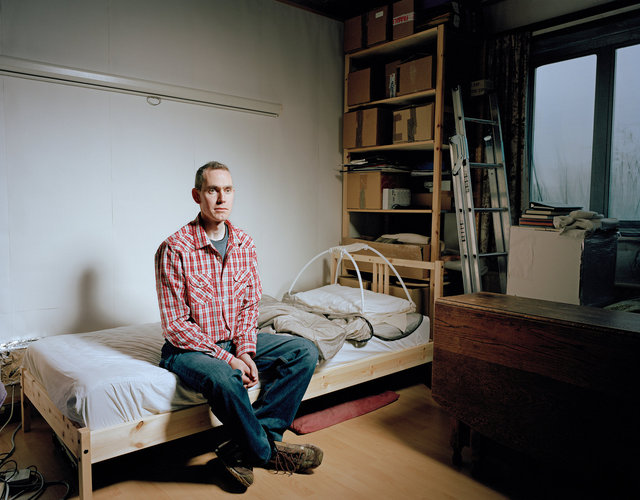
Tim Hallam, 37, Leamington Spa.
Tim is a graduate from Cambridge University. He has gone to great lengths to insulate his bedroom and has fitted foil on the walls, under the floor and on the ceiling. He sleeps in a custom-made silver coated fabric sleeping bag at night, which he says helps to block out electromagnetic fields. Tim can't work in an office environment and the condition has severely impacted his career aspirations. He currently drives a supermarket delivery van. “Where I'm living now, it's not a great situation. I'm lucky that the shielding worked to a large degree. But I would love to live somewhere I didn't have to live in a metal box and sleep in a bag, where I could go to a café and see my friends, go to the cinema, all those things that people take for granted.”
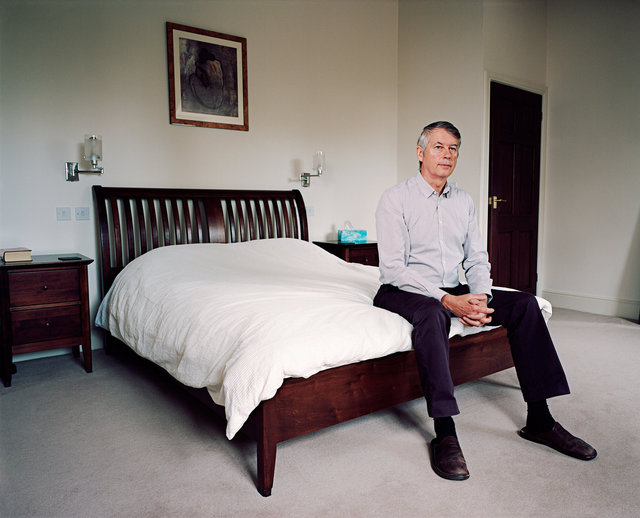
Brian Stein (63), Nottinghamshire.
Brian was CEO of the food company Samworth Brothers for 10 years. During this time the turnover of the company increased from £90m to over £900m. After 13 years of using a mobile phone he started developing severe pains in his ear every time he used it. In 2000, when the pain became so acute, he stopped using a mobile phone altogether. He is now affected by wi-fi and many other devices. He has insulated his home against electromagnetic fields (EMF's) and cuts the electricity off to his bedroom at night.

Brian Stein (64), Nottinghamshire
“Generally speaking, people don't talk about it. Can you imagine that you can't use a computer, you can't watch TV, you can't fly on a plane, go on a train, stay in hotels, or walk round the high street when there's wi-fi? My credibility in my job was very very important to me. So did I talk to customers about this to begin with? Not at all, but there came a point in time, where I took the view, if Brian Stein doesn't speak out about this, who will?"

Eileen O'Connor (48), Merseyside
Eileen lived 100m from a mobile phone mast for many years in Wishaw. She experienced many symptoms typical of electrosensitivity, but could not work out the cause. When she was diagnosed with breast cancer aged 38 and discovered that a number of her neighbours had similar symptoms and cancers, she became part of a very public campaign to have the mast removed. Eileen is a Director for The Radiation Research Trust Charity and works with the International EMF Alliance. "it's heart breaking to see people who are not getting support at the family. It's awful, it's a double insult really, not only are you suffering with this terrible condition, but then you've got people who think you're going crazy at the same time."

Screening Material
This material is a semi-transparent silvered fabric used by many sufferers to shield against electromagnetic fields.

Mobile phone mast, Oxfordshire, UK.
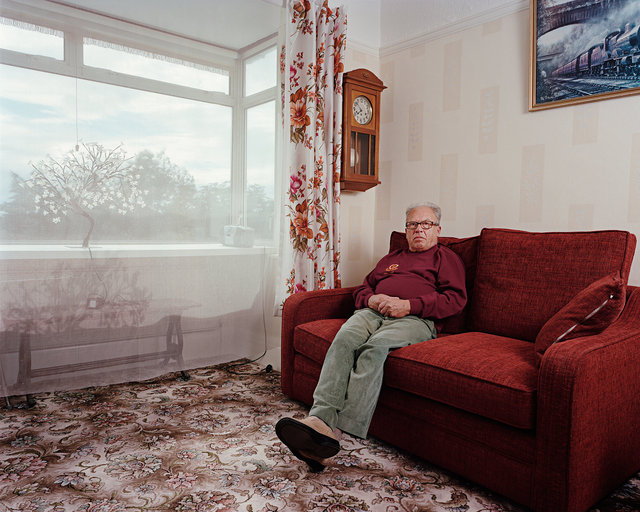
Ray Parsons (69)
Weston-Super-Mare. Retired joiner. When he started developing severe fatigue and body pains in his late forties, he initially thought he had developed ME. After 8 years of analysing his symptoms, he concluded that he was in fact suffering from electrosensitivity. He is photographed in his sitting room where he has fitted a silver coated netting over the window, which reduces the strength of electromagnetic fields.
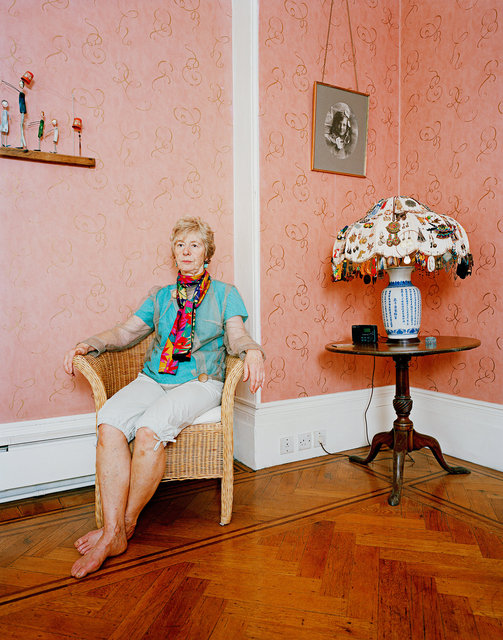
Michelle Berriedale-Johnson, London
Michelle Berriedale-Johnson, Belsize Park, London. She has run a series of magazines and websites for twenty years covering issues related to food allergy and intolerance. Her electrosensitivity began after heavy use of mobile phones and CRT computer monitors for work. She is now also affected by wi-fi and has insulated much of her home. She is photographed wearing a jacket made from a silver coated material which reduces the strength of electromagnetic fields.

Hannah Metcalfe, Kent
Hannah suffered from psoriasis as a child and started sun bed treatment at the age of 9, to help clear up her skin. In her late twenties, she started developing severe migraines and fatigue when working in offices with fluorescent lights. She always felt discomfort when using a mobile phone. The severity of her symptoms got worse when she later discovered a sensitivity to wi-fi. As a result of her sensitivities Hannah gave up her job as a trainee criminal solicitor in 2010 and now lives with her husband and two children on a farm in Kent. "When I realised that wi-fi was making me ill, and I also turned off the digital phone; so [there] was nothing wireless in the house, I just went from feeling like this sluggish person, to feeling so vibrant and alive, with so much energy. Just amazing to feel well."
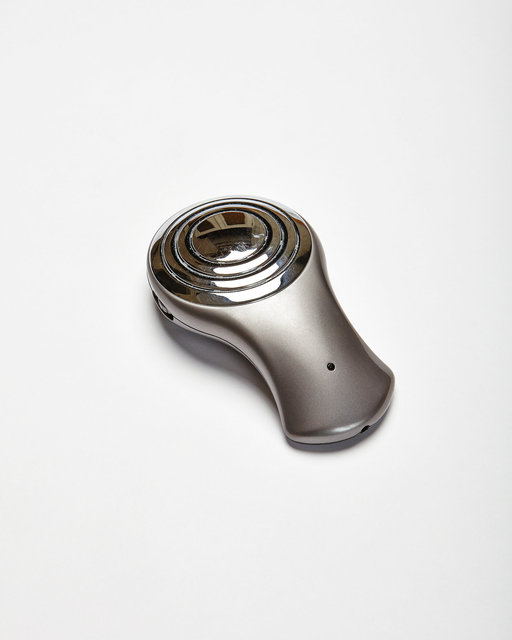
Acoustimeter
An acoustimeter emits a sounds when it detects an electromagnetic field. This is a very simple model, but there are many more sophisticated and expensive versions on the market.

Comeragh Mountains, Waterford
Camouflaged Mast
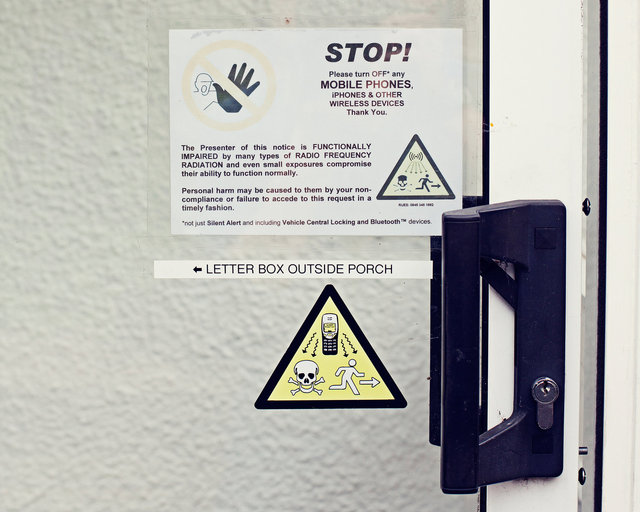

Freda Thornhill (65), Gloucestershire
Freda Thornhill (64), Retired teacher. Photographed in Westbury-on-Severn, Gloucesterhsire. Freda's first symptoms of electrosensitivity began in 1999 while using computers and CRT monitors at school. The condition became so severe over time that she had to give up her job. She is now also affected by mobile phones and wi-fi and spends extended periods of time away in her 'lifeboat van' so she can escape the electromagnetic fields at home.

Jenny Layton, Totnes
Jenny Layton. Devon (UK) When Jenny developed unexplained headaches, tinnitus, heart palpitations and insomnia, her doctors were at a loss as to the cause. After months of researching, she attributed her symptoms to a new neighbour's wi-fi next door. People who suffer from electrosensitivity in towns and cities often have to ask their neighbours whether they are willing to move or switch off their wireless routers and cordless phones. The responses can range from sympathy to outright refusal. She is photographed at a friend’s home on the edge of town. She felt more at ease here away from the ‘electro-smog’.
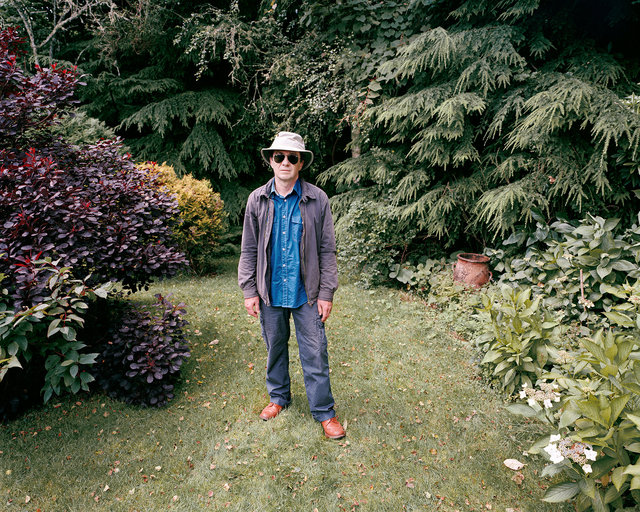
Steve Miller. Record Producer, Cornwall.
His electrosensitivity has forced him to radically change his lifestyle and to give up touring almost entirely, as most public spaces have wi-fi, which makes him very unwell. “I went to see a friend of mine who's surrounded in Falmouth by student flats and got wi-fi coming in from all directions. I put up with it for a while because I thought, I'm being rude, there's something other than this, something's wrong with me. And by the time I actually managed to leave, I staggered out of the building, couldn't drive for an hour, I didn't feel safe to drive, and then felt absolutely rotten for next two days. It was at that point I spoke to a GP about it and he said you're probably electrosensitive to pulsed microwave radiation which is, wireless, phone masts, mobile phones, cordless phones”

Clare Woodward, Devon.
Clare worked as a computer programmer for 9 years and then later re-trained as a complementary therapist. When her family moved into a new house in Devon, she began suffering from insomnia and heart palpitations, which she attributed to a mobile phone and TETRA mast very close by. They have since insulated their home at great expense with carbon paint and specialist windows. TETRA - Terrestrial Trunked Radio, is a powerful 2-way radio system primarily used by the emergency services.
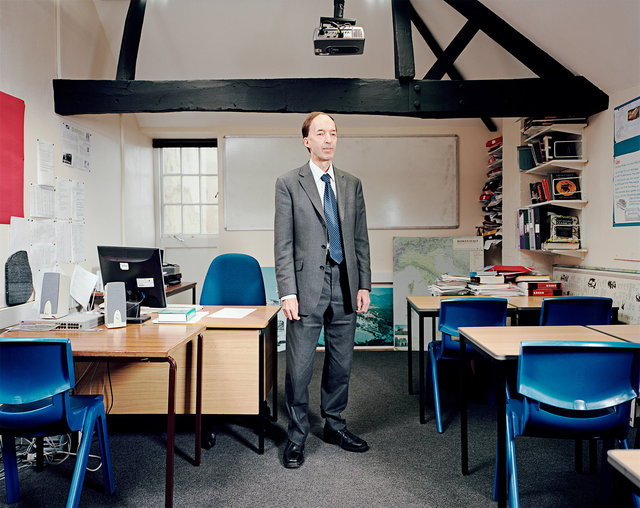
Michael Bevington, Stowe School, Buckinghamshire
Michael has been a Classics teacher for 34 years. In 2006, the school had wi-fi fitted in his classroom. He immediately developed symptoms of severe headache and heart palpitations. As he had been working in the same classroom for many years without any ill-health, he was able to quickly attribute his symptoms to the wi-fi. He asked the school for it to be removed and returned to a wired connection instead, and his symptoms at work went away.
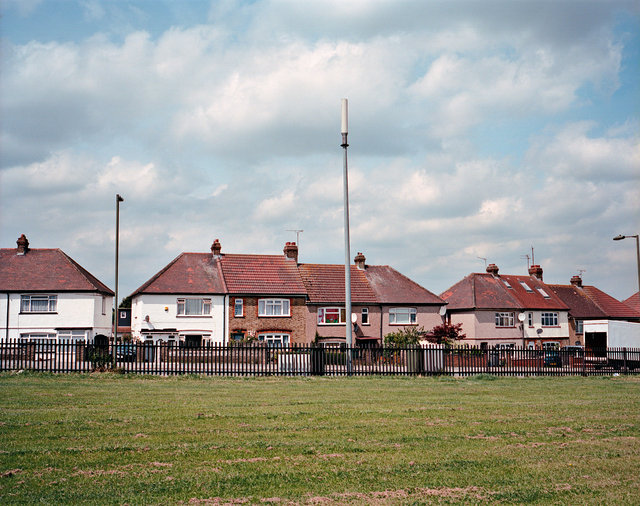
Mobile phone mast, NW London

Aluminium Foil
Frequently used for localised small-scale shielding.
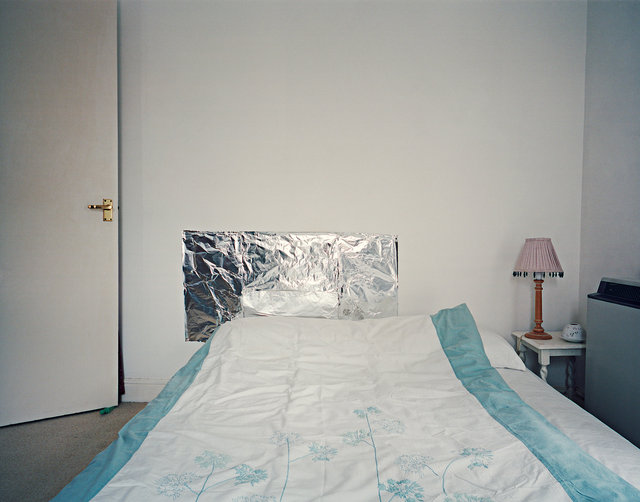
Foil on Wall
Common kitchen foil is often used by sufferers to insulate themselves against electromagnetic fields. In this case the foil was placed in this position in an attempt to shield against a neighbour's wireless router.
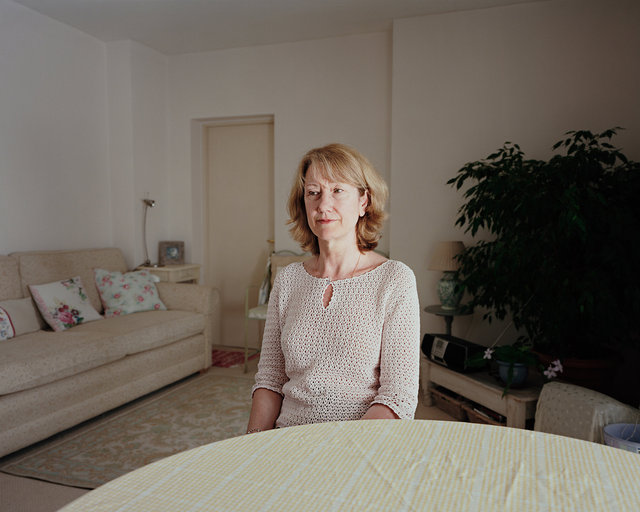
Angie Howard, Stroud, Gloucestershire
Angie is a teacher for dyslexic children. She didn’t identify herself as electrosensitive until wi-fi was fitted at her school. "I had put off having a mobile phone for years. I'm not phobic or anti technology but I just knew it didn't suit me physically, because mobiles made my ear hurt and made my head feel numb. Cordless [phones] are even worse. If I'd spent too long around computers, I'd feel very tired, and fuzzy headed. But nothing that I couldn't cope with. I'd just accepted it was part of modern life and you've just got to get on with it. When we moved into a new building, there was this massive influx of technology and I started to feel ill, almost from the day we moved in."
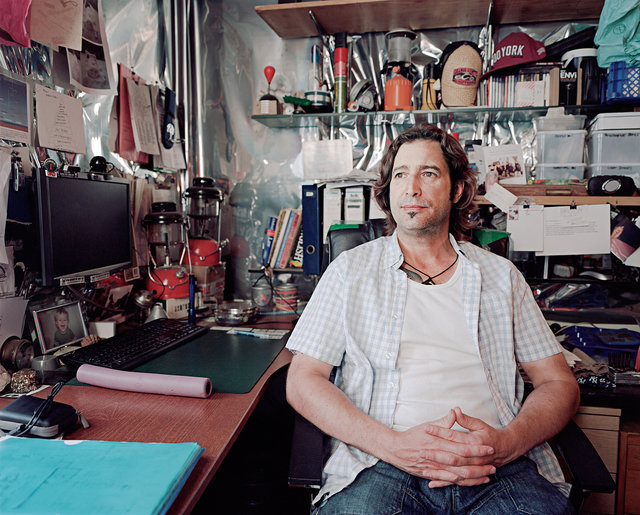
Damian May (44), Reading.
Damian is a cabinet maker and runs a property maintenance business. He discovered he suffered from electrosensitivity after buying a Nintendo Wii for his family for Christmas. It triggered severe headaches and body pains. His electrosensitivity has made it very difficult for him to run his company as he finds it painful to work in areas with wi-fi or mobile phones. He has turned off everything wireless in his home, has insulated his office and is campaigning to have wi-fi removed from his son's school.
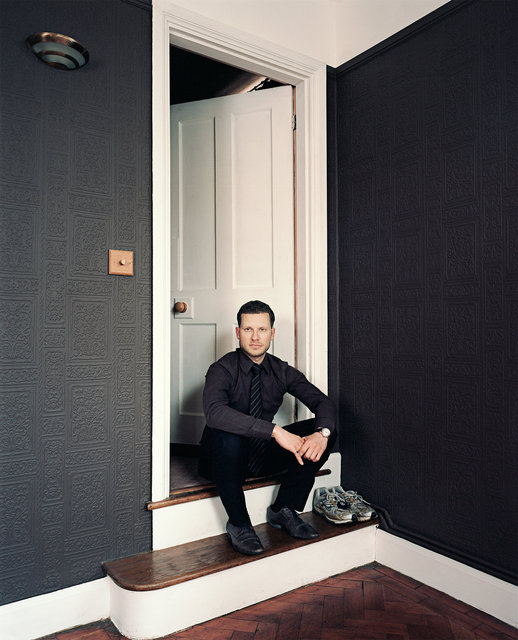
Raphael Cuesto, London
In 2004, while working for a telecommunications company in Kuala Lumpur, Raphael noticed that he was developing pains in his arms and hands every time he worked on his laptop. His symptoms got worse and he began getting headaches and heart palpitations from using his mobile for only a few minutes, and this progressed to almost immediate pain when he brought the phone near his head. He decided to stop using his mobile altogether and left his job in the telecoms industry. He is now a teacher and lives in London. "when you spend a minute on the phone and get palpitations, you know you have to do something about it. I remember one day turning [over] a piece of paper and writing in the middle of the page 'jobs without a mobile phone'. I had to change everything."
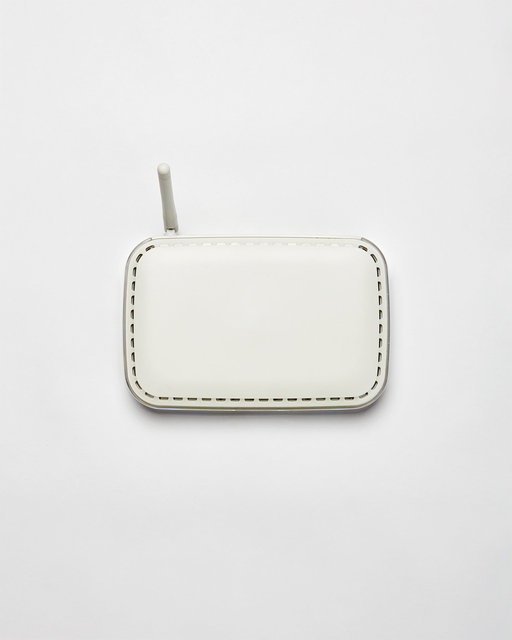
Contrary to popular perception, many EHS sufferers regularly use the internet. They switch off the wireless capabilities of their routers and use an ethernet wired connection instead.

Prof. Olle Johansson
Department of Neuroscience, Karolinska Institute, Sweden. Talking about EHS cases in Sweden... "From the very beginning, it was said that this was just a post menopausal problem in women. Then men started to report electro-hypersensitivity, and the self-proclaimed experts said 'it's actually only elderly [people], because they are afraid of new technology.' We then started to get children and teenagers and young people, and they rolled out a new explanation, which was that 'it's actually people with higher education.' And it went on like this, but today you can see that any political colour, any income class, both sexes, all age groups, are affected."
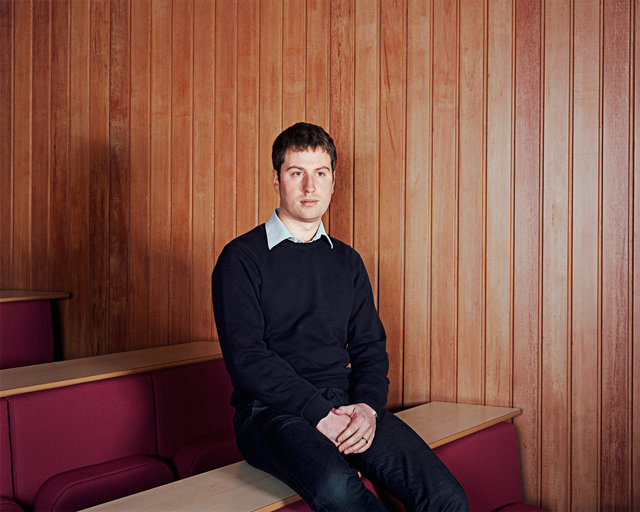
Dr. James Rubin, (35) Department of Psychological Medicine, King's College London.
Dr. Rubin has carried out provocation studies on people who report to suffer from electrosensitivity. "There was no evidence that it was the electromagnetic field per se that was causing the symptoms, instead it was something to do with believing that you were being exposed that was responsible for the symptoms."

Dr. Erica Mallery-Blythe, Lincolnshire
Erica worked as an emergency medical doctor for 12 years in trauma rooms across the UK and abroad. In 2008 she became interested in radiation research and is now a medical advisor for the charity Electrosensitivity UK. She advises EHS sufferers on how to improve their health, and in serious cases has given refuge at her rural home to people needing to escape their home environments.

Carbon Paint
This expensive thick black paint is widely used to shield rooms and entire houses from electromagnetic fields.
